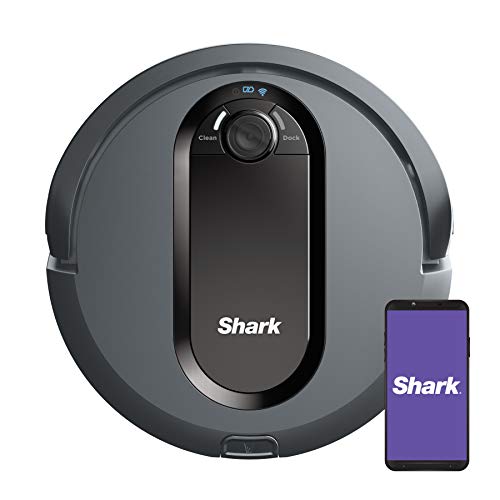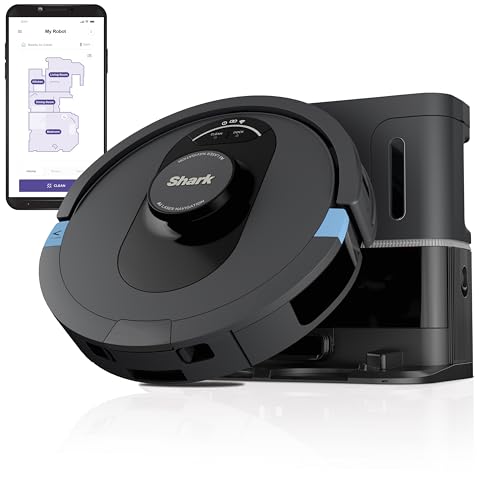The 3 Most Significant Disasters In Robot Vacuum The Robot Vacuum’s 3 Biggest Disasters In History
Warning: Undefined variable $PostID in /home2/comelews/wr1te.com/wp-content/themes/adWhiteBullet/single.php on line 66
Warning: Undefined variable $PostID in /home2/comelews/wr1te.com/wp-content/themes/adWhiteBullet/single.php on line 67
|
| Articles Category RSS Feed - Subscribe to the feed here |
|
|
How to Find the Best robot vacuum with mop Function Vacuum
If you’re able to live without the benefits of smart features like mapping, and aren’t worried about emptying the garbage bin every 60 days or then, a basic robot vacuum could be a good choice for you. Find one that is clean and works with voice assistants.
It is a pro at picking up dirt, cat litter and pet hair on hardwood floors, tile and carpeting with less pile than any other robo vacuum we’ve tried. It can also plan out and create virtual no-go zones for rooms or specific areas.
1. Powerful Suction
A robot vacuum cleaner can help you keep up with the dust, pet fur and dander that accumulates on your floor each day. It also can reduce the frequency you have to deep clean, saving your time and effort. The most effective model comes with powerful suction that will easily clean up most mess and leave your home clean.
You can cover more area by using a robot vacuum and mop, which is especially useful if you have a large home. Choose a model that has an water reservoir integrated into the chassis or as a separate piece that you can swap out when the vacuuming is finished. You’ll need to empty and refill it, however, so this is an additional task that requires some extra effort on your part.
In a perfect universe, you would clear your floors before using your robot vacuum, preventing it from running into anything. But in most homes, this isn’t feasible or robot cleaner with Mop function desirable. Most robots allow you to utilize an app for your smartphone to build virtual barriers that the robot can see. Certain models have no-go zones, which you can flag areas you don’t wish it to access. For instance, a child’s room or a pile cords in an area.
If you’re looking for a simple robot vacuum without all the bells and bells, this model from networking company TP-Link is a great option. It’s quiet and works well on both hard floors and low-pile rugs and can be scheduled using the app to vacuum or mop at your own convenience. It has a good battery life, which can last for up to 180 minutes before it requires to recharge.
2. Easy to operate
Robot vacuums generally need very little from you. They make use of sensors lasers, cameras, and sensors to move around and collect dust, pet hair and food crumbs from hard floors, tile and hardwood. Many have boundary strips that allow them to stay within the walls of a room while more expensive models can be set to automatically wake up and begin cleaning at a set time. Some even have fall-detection technology that prevents tumbling down stairs or getting tangled in electrical cords.
Look for models that can be controlled from the comfort of your sofa using voice assistants like Alexa or Google Assistant. Also, look for models with Wi-Fi connectivity that allow you to start cleaning sessions from anywhere via an app. Depending on how big your house is, you may want a model that has a long battery life and a roomy dustbin that doesn’t require being emptying frequently.
Certain robot vacuums are also mops. They make use of water reservoirs to wash the floor. This is great for mopping, but not ideal for difficult messes such as pet poop and other spills. You can pick hybrids that have an able mopping pad made of microfiber, or a self-emptying version that lets you go up to 60 days before emptying the base.
3. Smart Mapping
Some robots utilize advanced mapping technologies to build a detailed map of your floorplan while they clean, making it easier for them to avoid crashing into furniture or falling over things like cords or chair legs. This feature is usually only available on higher-end models, but it’s certainly one of the most effective ways to ensure your robot has a complete understanding of the layout of your house and knows where to go next when it’s low on battery.
If you don’t want your robot to venture into areas of your home you’d rather it stay away from (like your children’s toys or the tangled mess of device cords in the corner) The majority of robots offer some method of creating virtual barriers, either through their apps or physical boundary strips. You can block off areas that you don’t want your robot to go into to allow it to concentrate on the areas that require the most attention.
Many robots also have the ability to automatically navigate to different floorings depending on the surface they’re cleaning, whether that’s changing between hard and carpet or focusing on certain areas of your home, such as corners and baseboards. This feature proved helpful in our tests and improved the vacuum’s performance on both hardwood flooring and low-pile floor carpeting. It’s nevertheless important to secure furniture and cords before running your robot vacuum so that it doesn’t get stuck or run into something it shouldn’t.
4. Remote Control
The majority of robot vacuums are WiFi-connected and work with Amazon Alexa, Google Assistant and Siri Shortcuts to allow you to control them using voice commands or via your smartphone. Many connect to smart home systems and build an outline of your space after each cleaning session to “learn” your layout and devise more efficient routes for future trips. Certain models have obstacle avoidance features built in to prevent them from causing damage to furniture and getting stuck on objects like loose charging cables or pet hair.
Most robots are equipped with a remote control that you can use to navigate them around your house. Most robots are controlled via a mobile application, which offers more features. It is possible to create multiple cleaning schedules, build an inventory of your favorite rooms and even manually guide your robot around specific areas using directional arrows that appear on the screen.
Certain models have no-go zones, which are virtual barriers that you can set up in the app to stop the robot from entering certain areas (like kids’ toys or dog beds and bowls). Some apps allow you to draw an outline of your home and provide detailed information about the floors. The app that we recommend as our top pick, the Roborock S7+, has many useful options to help you clean your home, however its interface isn’t as polished as those from iRobot and Shark.
5. Long Battery Life
Robotic vacuums that can sweep a whole house without stopping to recharge or empty their trash bins make it easier for you to save time and effort. Some robot vacuums are compatible with smart home platforms such as Alexa, Google Assistant, and Siri Shortcuts to allow hands-free operation. They can also draw maps of the area that allows you to program them for certain areas or rooms and to avoid obstacles.
The majority of robot vacuums come with some degree of object detection however, higher-end models such as the iRobot J7 have advanced features such as “home mapping” and advanced obstacle avoidance that will simplify your life (although our test bot did “eat” a pair of socks). If you’re looking to take your home maintenance even further consider a robot mop with a tank of water that you fill and empty yourself.
While none of the models we tested could match the ability to pick up dirt of a stand-up vacuum, they were able to do a fantastic job cleaning hard floors as well as carpets with a low pile. They are great at sweeping up fine dust and debris, food particles, dirt tracked in and pet hair. They can also handle screws and Robot Cleaner With Mop nuts made of metal as well as cats’ litter. The best robot vacuums are able to clean corners and edges and work on furniture. For a basic model that works by itself and is comparatively inexpensive, check out the Eufy 11S.
6. Convenient Self-Charging
With the right configuration, a robot vacuum can aid in keeping your home looking and looking and feeling cleaner every day without a lot of effort. You can schedule cleanings through the app and create zones that are not allowed to enter so that your robot doesn’t damage your plants or ruin your favorite chair. Many of our top picks automatically empty their dustbins and clean their docking stations for you.
The top robot vacuums can be programmed to clean your floors regularly for months or even weeks at a time, removing you from the time-consuming task of manually mopping and sweeping your floors on a daily or weekly basis. This allows you to spend more time on things you love and reduces the amount of time your floors need to be cleaned manually.
During testing, Q Revo was able to capture fine particles such as baking soda and oatmeal. It also grabbed larger particles like nails and screws made of steel, as well as fluffy things like pet hair. It doesn’t have the smart mapping and objects avoidance features of our top picks, however it works well enough for the majority of families.
 The best floor vacuum robot thing about the j7 is its ability to recognize and avoid obstacles such as power cords as well as socks and shoes, and pet waste. This means that you don’t need to clean the room prior to running your robot, although messy rooms can mean that your robot could get stuck and not do as good a job.
The best floor vacuum robot thing about the j7 is its ability to recognize and avoid obstacles such as power cords as well as socks and shoes, and pet waste. This means that you don’t need to clean the room prior to running your robot, although messy rooms can mean that your robot could get stuck and not do as good a job.
Find more articles written by
/home2/comelews/wr1te.com/wp-content/themes/adWhiteBullet/single.php on line 180